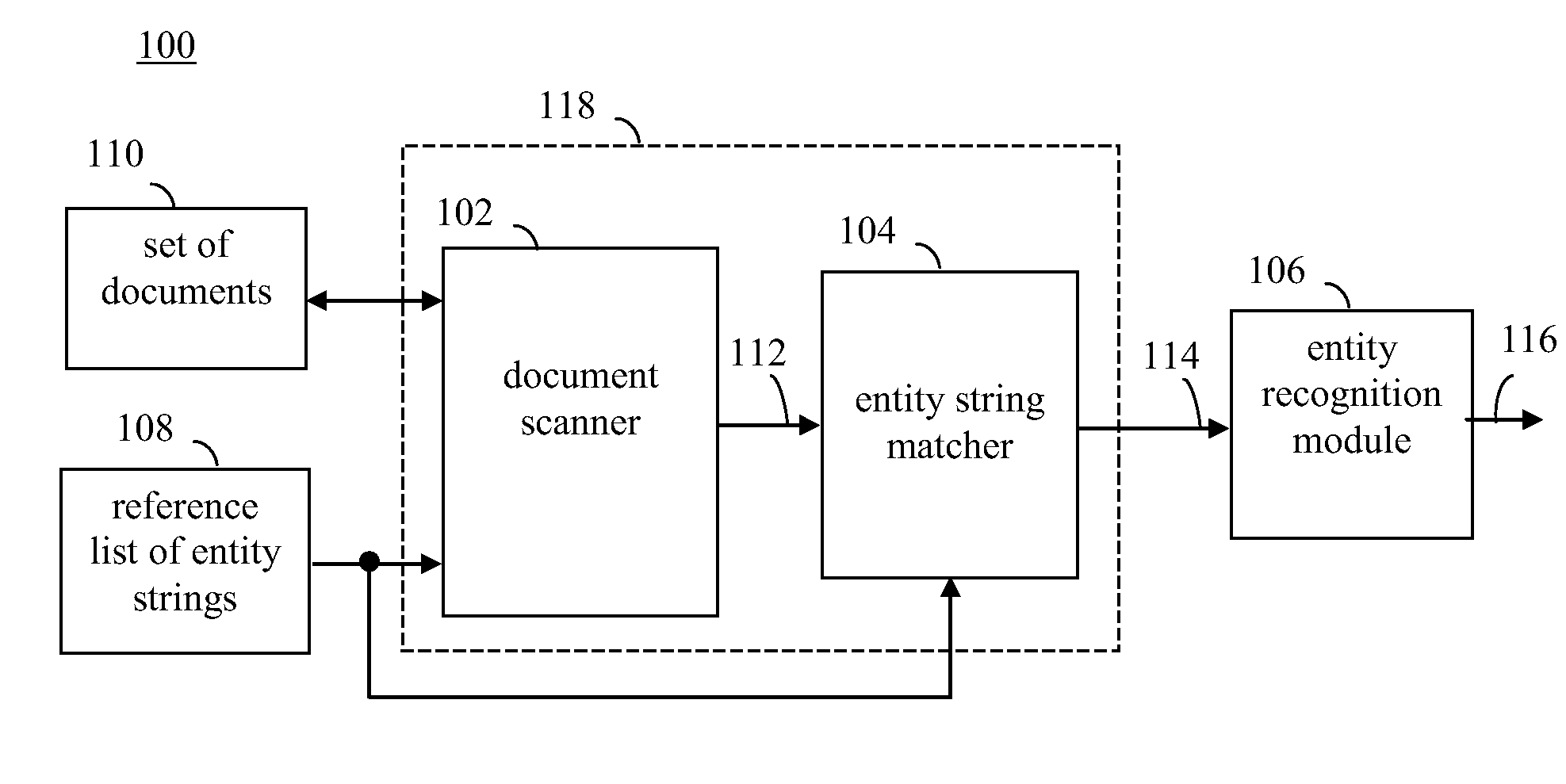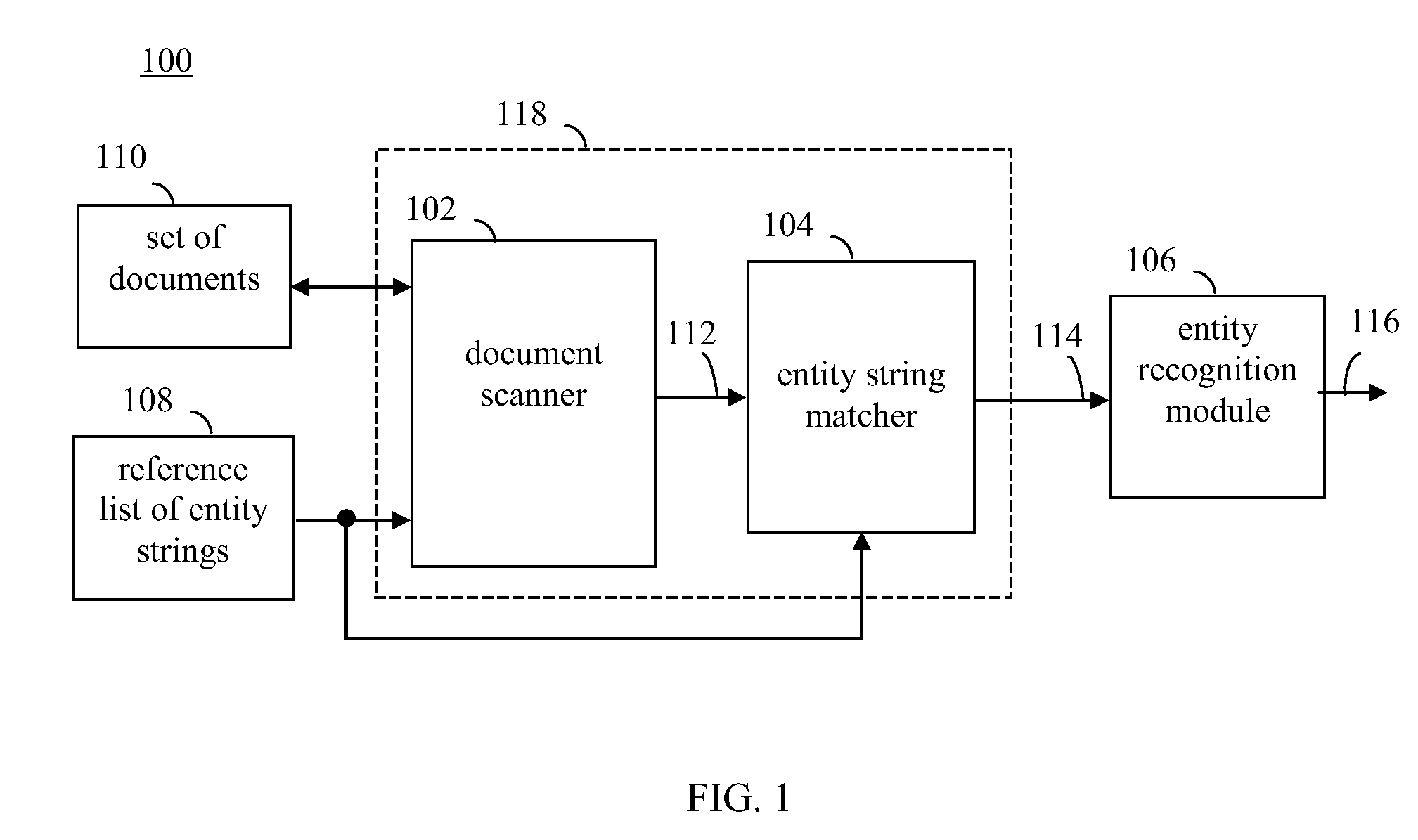Scalable lookup-driven entity extraction from indexed document collections
- Summary
- Abstract
- Description
- Claims
- Application Information
AI Technical Summary
Benefits of technology
Problems solved by technology
Method used
Image
Examples
example embodiments
[0050]Embodiments provide techniques for filtering documents that may be used entity extraction. In an embodiment, a covering set of token sets is identified for reference list 108 to enable more efficient querying of inverted index 206. The covering set of token sets may enable a reduction in a number of queries in exchange for additional documents being processed by an entity string matcher. The covering set of token sets may be selected in a manner to balance the costs of inverted index querying and entity string matching to provide an efficient document filter.
[0051]For example, FIG. 4 shows a block diagram of an entity extraction system 400, according to an example embodiment. System 400 is configured to perform entity extraction on set of documents 110 based on reference list 108. As shown in FIG. 4, system 400 includes a document filter 412 and entity recognition module 106. Document filter 412 is configured to filter documents of set of documents 110 to reduce a number of do...
example approximate match embodiments
[0112]In the embodiments described in the previous sections, documents are identified that contain text exactly matching one or more entity string in reference list 108. In further embodiments, documents may be identified containing text that “approximately” matches one or more entity strings in reference list 108.
[0113]For example, a product listed in reference list 108, such as “Microsoft Xbox 360 4GB system,” may be mentioned in a document of set of documents 110 under a different representation—an “approximate match” or “approximate mention”—such as “Microsoft Xbox 4GB” or “Xbox 360 4GB.” In an embodiment where document filter 412 of FIG. 4 is configured to determine exact matches for entity strings of reference list 108, these approximate matches may not be detected. In some cases, it may be desired to determine such approximate matches in order to improve the accuracy of entity recognition performed by entity recognition module 106.
[0114]FIG. 10 shows a block diagram of an ent...
example bulk union embodiments
[0118]As described above, some inverted index engines (e.g., inverted index engine 710 in FIG. 7) handles queries with a small number of tokens. However, reference list 108 may include a large number of entity strings for processing. As described above, such queries can be batched to be executed by inverted index engine 710. However, some of inverted index engines, such as SQL Server 2008, expose a relational view of the inverted index. For instance, the relational view over the inverted index may be [Token; DocId; Pos]. Using this view, a union of docid sets of a large number of tokens can be performed. For example, the following SQL query performs a union of docid lists of a set of tokens in a TokenTable[Token].
[0119]SELECT distinct R.DocId
[0120]FROM II-RelationalView R, TokenTable S
[0121]WHERE R:Token=S:Token
[0122]The union operation over a large number of document lists can be performed efficiently based on well-known techniques such as hash-union or merge-sort techniques. The h...
PUM
 Login to View More
Login to View More Abstract
Description
Claims
Application Information
 Login to View More
Login to View More - R&D
- Intellectual Property
- Life Sciences
- Materials
- Tech Scout
- Unparalleled Data Quality
- Higher Quality Content
- 60% Fewer Hallucinations
Browse by: Latest US Patents, China's latest patents, Technical Efficacy Thesaurus, Application Domain, Technology Topic, Popular Technical Reports.
© 2025 PatSnap. All rights reserved.Legal|Privacy policy|Modern Slavery Act Transparency Statement|Sitemap|About US| Contact US: help@patsnap.com



